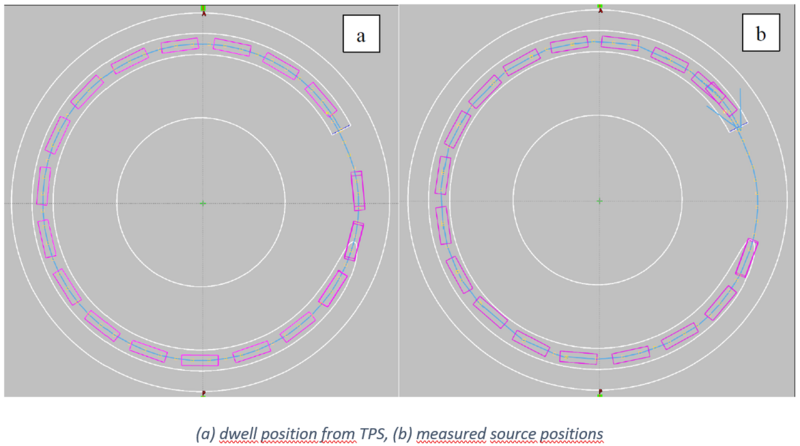Study of dwell positions discrepancies from TPS in brachytherapy RING applicators
PO-2177
Abstract
Study of dwell positions discrepancies from TPS in brachytherapy RING applicators
Authors: Inga Balode1, Vlada Dmitrijeva2, Galina Boka3, Zane Rudusa4
1Riga East University Hospital, Therapeutic Radiology and Medical Physics, Riga, Latvia; 2Childrens Clinical University Hospital, Medical Devices and Safety, Riga, Latvia; 3Riga East University Hospital, Therapeutic Radiology and Medical Physics, Riga, Latvia; 4Riga East University Hospita, Therapeutic Radiology and Medical Physics, Riga, Latvia
Show Affiliations
Hide Affiliations
Purpose or Objective
The aim of brachytherapy is to deliver a precise and safe dose to the target volume, while protecting healthy tissue from undue exposure. As institution have had a complete check for different types of new design MRI compatible RING applicators (Bravos, Varian), measurements were performed to determinate source positioning errors and compare with the treatment planning Ring template implemented in the TPS (Eclipse V15.6)
Material and Methods
In this study dwell position errors of RING applicators with two different ring diameters (26mm and 30mm) and three different ring angles (45⁰, 60⁰ and 90⁰) were measured. For each applicator geometry combination (diameter and angle) two same applicators (in total, twelve RING applicators were tested) were evaluated to see if source position in same applicator types differ. To evaluate source dwell position, three treatment plans for each applicator were performed, to irradiate radiochromic films: source dwell time was 10sec nominally for each third position starting from first, second and third position in each plan, rest position dwell times were set 1sec nominally, to force source to stop and simulate dwell positions as in real treatment plan. In this case, only each third position was visibly irradiated on radiochromic film. After film irradiation, each visible dwell position was marked, and all three films was fused together to get correct dwell positions with step 5mm (as in treatment plans). After dwell position determination, angles to each position were measured and error was calculated. The aim was to get real dwell positions for RING applicators and compare with plan template for treatment calculation.
Results
For all RING applicators there was significant difference of average errors between dwell positions. As the acceptable error of ±1mm was determined but measured position errors were within the range between 0 and 9.5mm for different dwell positions, a decision was made to create separate templates for each type of applicators with average error correction for each dwell position. (Image) However, after template dwell position and measurement comparison, only 60⁰ and 45⁰ RING applicators was within acceptable error range. For 90⁰ applicators dwell position errors in each position were more than 1mm between measurements (for 26mm and 30mm diameter applicators max 2.8mm 3.2mm respectively).
Conclusion
New type of RING applicators was offered for clinical use and measured errors of dwell positions compare with system template were significant. Study suggestion is to create more complex but also more accurate error correction, which includes separate error correction for each applicator’s each dwell position. With a particular focus on re-checks corrected template after replacing the source for all clinically used applicators, giving particular attention to 90⁰ applicators, showed errors that are outside acceptable range.